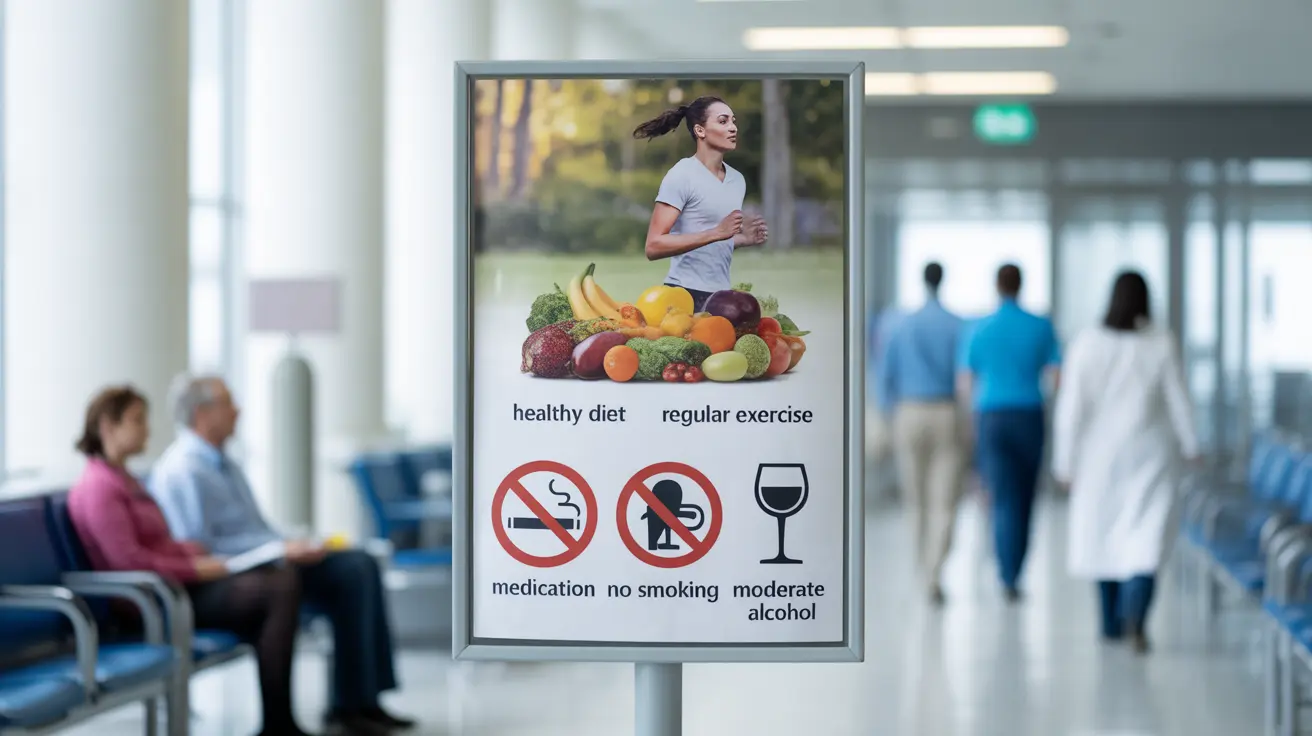A transient ischemic attack (TIA), often called a mini-stroke, serves as a crucial warning sign that you may be at risk for a more severe stroke. Understanding how to prevent a stroke after experiencing a TIA is essential for protecting your health and potentially saving your life.
Taking immediate action and making specific lifestyle modifications after a TIA can significantly reduce your risk of experiencing a full stroke. This comprehensive guide will explore the most effective strategies for stroke prevention following a TIA.
Understanding the Urgency of Post-TIA Care
A TIA produces stroke-like symptoms that typically resolve within 24 hours. However, this temporary nature shouldn't diminish its significance as a serious medical emergency. Research shows that about 1 in 3 people who experience a TIA will eventually have a stroke, with the highest risk occurring in the first few days and weeks following the event.
Immediate Medical Response
The first steps you take after experiencing TIA symptoms are crucial for preventing a future stroke. Your healthcare provider will likely perform a comprehensive evaluation to identify the underlying cause of your TIA and develop an appropriate treatment plan.
Medical Evaluation Components
- Detailed medical history review
- Physical examination
- Brain imaging (CT scan or MRI)
- Heart function tests
- Blood vessel examination
- Blood tests for various risk factors
Essential Lifestyle Modifications
Making significant lifestyle changes is a cornerstone of stroke prevention after a TIA. These modifications can dramatically reduce your risk of experiencing a full stroke.
Blood Pressure Management
Maintaining healthy blood pressure is crucial in preventing stroke after TIA. Your healthcare provider will likely recommend:
- Regular blood pressure monitoring
- Medication if prescribed
- Reducing sodium intake
- Regular exercise
- Stress management techniques
Dietary Changes
Adopting a heart-healthy diet can significantly impact your stroke risk. Focus on:
- Increasing fruits and vegetables
- Choosing whole grains
- Limiting saturated fats
- Reducing salt intake
- Maintaining proper portion control
Medical Management Strategies
Your healthcare provider may prescribe various medications to help prevent stroke after TIA. These might include:
- Antiplatelet medications
- Anticoagulants
- Blood pressure medications
- Cholesterol-lowering drugs
Lifestyle Habits to Modify
Certain lifestyle changes are particularly important for reducing stroke risk:
Smoking Cessation
Quitting smoking is one of the most important steps you can take to prevent stroke after TIA. Smoking increases blood pressure and promotes blood clot formation.
Alcohol Moderation
If you drink alcohol, limit your intake to moderate levels or consider stopping altogether. Excessive alcohol consumption can increase blood pressure and stroke risk.
Regular Monitoring and Follow-up
Maintaining regular contact with your healthcare team is essential for successful stroke prevention. This includes:
- Keeping all scheduled follow-up appointments
- Regular blood pressure checks
- Medication reviews
- Risk factor monitoring
Frequently Asked Questions
- What lifestyle changes can help prevent a stroke after having a transient ischemic attack (TIA)?
Key lifestyle changes include maintaining a healthy diet, regular exercise, managing blood pressure, quitting smoking, limiting alcohol intake, and maintaining a healthy weight. These modifications, combined with proper medication adherence, can significantly reduce stroke risk.
- How important is managing blood pressure to reduce stroke risk following a TIA?
Blood pressure management is crucial in preventing stroke after TIA. High blood pressure is a leading risk factor for stroke, and maintaining it within normal ranges through medication, diet, and lifestyle changes is essential for prevention.
- What medications are commonly prescribed to prevent stroke after a TIA?
Common medications include antiplatelet drugs (like aspirin), anticoagulants, blood pressure medications, and statins for cholesterol control. The specific combination depends on individual risk factors and medical history.
- How soon should I seek medical care after experiencing symptoms of a TIA?
Seek immediate medical attention if you experience TIA symptoms, as this is a medical emergency. Quick action is crucial because the risk of stroke is highest in the days and weeks following a TIA.
- Can quitting smoking and reducing alcohol intake lower my chances of having a stroke after a TIA?
Yes, quitting smoking and moderating alcohol consumption can significantly lower your stroke risk after TIA. Smoking cessation, in particular, is one of the most effective ways to reduce stroke risk, as smoking damages blood vessels and increases clot formation.




